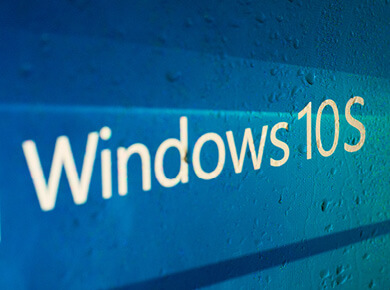Windows 10: Should you make the leap?
Misconceptions and the reality in staying on Windows 7
Jan. 3, 2019 | By Tim Pomerleau

It’s been nearly four years since Microsoft ended mainstream support for Windows 7. Yet with 40 percent of the world’s computers still running the OS—most of them in corporate and enterprise environments—Microsoft has extended the option to pay for continued support to January 2023.
While they’re not kicking you out the door (just yet), last call has been made. So why should you continue to delay your Windows 10 migration?
1. You’ve got money to burn
Extended support is available to all Windows 7 Professional and Enterprise customers in volume licensing. The monthly per-device cost will likely vary by customer and device count, with Microsoft offering discounts to customers with Software Assurance, Windows 10 Enterprise or Windows 10 Education subscriptions.
However, the price is likely to rise each year from the original extended support deadline (January 2020) through the new deadline (January 2023). The cost of migration is likely to increase over time as well. Your organization can continue to run Windows 7 and delay migration for the next few years…if you’ve got increasing budget to dedicate to it.
2. You see value maintaining the status quo
During the extended support period, critical security-related patches and hotfixes will still be released on Patch Tuesdays, but there won’t be any new Windows 7 features. You’ll be paying more to maintain an OS that is getting less valuable over time as it will have fewer and fewer capabilities than Windows 10, which is a more current product that Microsoft is actively developing.
3. You like taking security risks
Currently, patches and hotfixes for Windows 7 are still being released frequently. However, the cadence after January 2020 is unknown and will likely depend on how many organizations elect to pay for extended support, as Microsoft is unlikely to search for issues. They’ll respond to user-reported problems, but as mainstream adoption of Windows 10 continues to increase, fewer users will remain on Windows 7, meaning fewer issues will be reported and, therefore, fewer patches will be released.
In all seriousness, Windows 10 is a better product for your enterprise—and if you can upgrade now, you should.
The reality: Windows upgrades require work, whether you delay or not
Delaying the Windows 10 upgrade won’t decrease the effort required to do so, and in fact, could increase it. You’ll still have to test and certify application compatibility, evaluate new features and functionality, and prepare Active Directory and other infrastructure components. And after your infrastructure is ready, you’ll still need to plan, schedule and complete deployment of the Windows 10 upgrade. Extended support doesn’t remove any of the required preparation and execution—all of this will still be needed.
The reality: Delaying is expensive
Gartner estimates it will cost $250–$400 per device to migrate to Windows 10 (Gartner 2016). While staying on Windows 7 may look less expensive in the short term, you’re putting yourself in a technical debt trap. Migration costs will likely increase, but even if they stay the same, you’re adding unnecessary support costs to the unavoidable migration cost each year you stay on Windows 7.
The reality: Hardware headaches abound
Here’s where things get complicated. Full Windows 7 support is available for 6th-Generation Skylake (and older) processors until January 2020. Then, only the "most critical" security fixes will be released for those platforms, and they’ll only be made available if they don't adversely impact Windows 7 on the newer 7th-Generation (Kaby Lake and AMD “Bristol Ridge” Rizen) systems.
Microsoft has stopped delivering nonsecurity Windows 7 updates for systems that run 7th-Generation processors and will cease Windows 7 security fixes for these systems in January 2020.
To make matters worse, 6th-Generation processors are no longer being produced, so new hardware supporting Windows 7 is in short supply. Most OEMs are almost sold out of 6th-Generation processors, and now Windows 10 is the only supported Windows platform on 7th-Generation processors, which further limits the hardware available for Windows 7.
Bottom line: You’re delaying the inevitable
So even though Windows 7 Extended Support can be stretched to January 2023, it only applies to the OS and critical security patches and hotfixes—hardware and processor support is still set to end in January 2020. So from January 2020 to January 2023, you’ll be in a position where Windows 7 isn’t supported on new (7th-gen) hardware—and Windows 10 isn’t supported on older (6th-gen) hardware.
The inability to purchase older 6th-gen hardware will make it difficult to continue to run Windows 7, especially if your hardware is already reaching end of life. And since newer 7th-gen hardware won’t support Windows 7, hardware life cycle management or hardware failure may force Windows 10 into your environment whether you are ready or not.
While the migration from Windows 7 to Windows 10 shouldn’t be as painful as the migration from Windows XP to Windows 7, we know from experience that the longer we wait, the more painful the process gets. And with increasing costs and limited hardware availability, you need to start implementing Windows 10 by the end of 2020. The longer you wait, the greater risk you are taking from a support, hardware failure and security perspective.
Tim Pomerleau works as practice architect within TEKsystems Global Services, providing Windows 10 implementation consulting and services for enterprise clients.